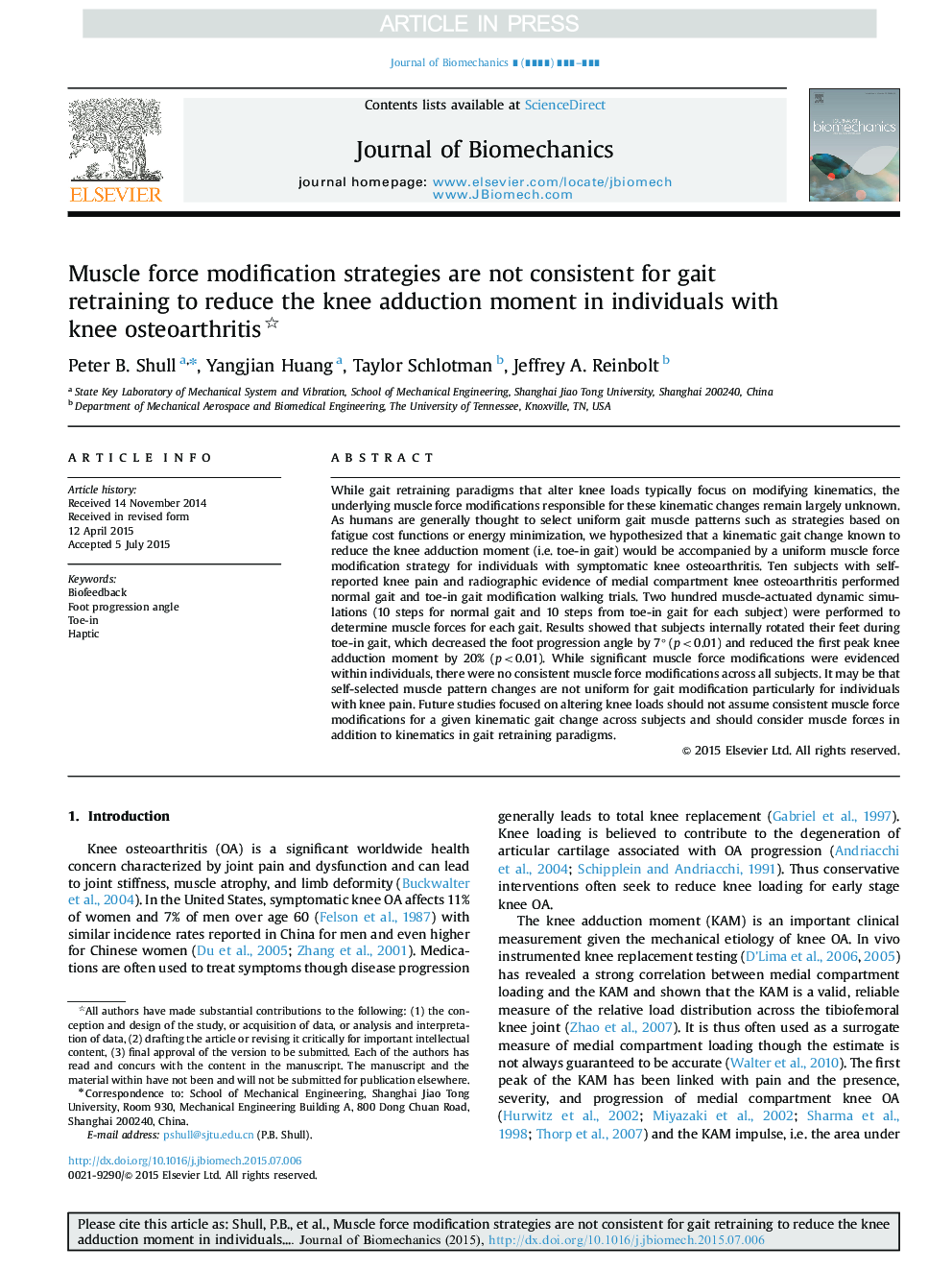| Article ID | Journal | Published Year | Pages | File Type |
|---|---|---|---|---|
| 10431291 | Journal of Biomechanics | 2015 | 7 Pages |
Abstract
While gait retraining paradigms that alter knee loads typically focus on modifying kinematics, the underlying muscle force modifications responsible for these kinematic changes remain largely unknown. As humans are generally thought to select uniform gait muscle patterns such as strategies based on fatigue cost functions or energy minimization, we hypothesized that a kinematic gait change known to reduce the knee adduction moment (i.e. toe-in gait) would be accompanied by a uniform muscle force modification strategy for individuals with symptomatic knee osteoarthritis. Ten subjects with self-reported knee pain and radiographic evidence of medial compartment knee osteoarthritis performed normal gait and toe-in gait modification walking trials. Two hundred muscle-actuated dynamic simulations (10 steps for normal gait and 10 steps from toe-in gait for each subject) were performed to determine muscle forces for each gait. Results showed that subjects internally rotated their feet during toe-in gait, which decreased the foot progression angle by 7° (p<0.01) and reduced the first peak knee adduction moment by 20% (p<0.01). While significant muscle force modifications were evidenced within individuals, there were no consistent muscle force modifications across all subjects. It may be that self-selected muscle pattern changes are not uniform for gait modification particularly for individuals with knee pain. Future studies focused on altering knee loads should not assume consistent muscle force modifications for a given kinematic gait change across subjects and should consider muscle forces in addition to kinematics in gait retraining paradigms.
Related Topics
Physical Sciences and Engineering
Engineering
Biomedical Engineering
Authors
Peter B. Shull, Yangjian Huang, Taylor Schlotman, Jeffrey A. Reinbolt,
